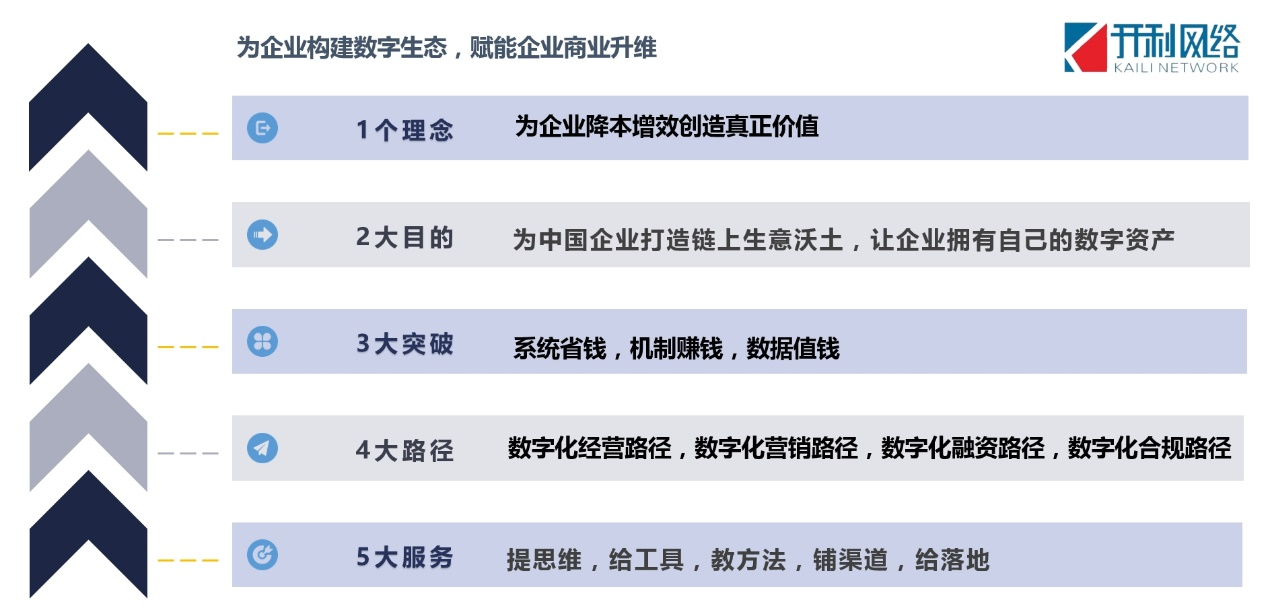目录
- 前言
- 一、ELK是什么?
- 二、系统环境(CentOS 7)(2C4G的机器。。。)
- 三、安装步骤
- 3.1 安装ElasticSearch
- 3.1.1 解压到/usr/local
- 3.1.2 修改jvm堆配置(可选,测试服务器内存低)
- 3.1.3 修改elasticsearch.yml
- 3.1.4 创建es用户
- 3.1.5 赋予es操作权限
- 3.1.6 万事俱备
- 3.1.7 启动问题清单
- 3.1.8 启动成功
- 3.2 安装Kibana
- 3.2.1 解压到/usr/local,并赋予用户es权限
- 3.2.2 修改kibana.yml配置
- 3.2.3 关闭ssl配置
- 3.2.4 使用es用户启动
- 3.2.5 启动成功、测试
- 3.3 Logstash安装
- 3.3.1 解压到/usr/local
- 3.3.2 测试配置
- 3.3.3 多应用如何推送
- 3.3.3 关闭logstash
- 3.3.4 错误收集
- 3.4 Filebeat安装
- 3.4.1 解压(后续在各服务器下安装,把对应日志推送到logstash或者直接推给ES即可)
- 3.4.2 新增测试配置
- 3.4.3 关闭Filebeat
- 3.4.4 收尾工作
- 四、其他操作
- 4.1 获取所有索引
- 4.2 删除索引
前言
单机部署ELK + Filebeat 收集应用日志。
一、ELK是什么?
ELK 是一个开源的数据分析和日志管理解决方案,全称为 Elasticsearch, Logstash, Kibana。ELK Stack 主要用于收集、管理和分析日志数据,帮助用户理解和洞察大型数据集。以下是各个组件的功能概述:
- Elasticsearch:这是一个基于 Lucene 的全文搜索引擎和分布式索引引擎,用于存储、管理和搜索大量数据。它提供了一个用于查询和分析数据的 RESTful API,并利用其强大的搜索和分析功能,帮助用户处理和理解大规模数据集。
- Logstash:这是一个强大的数据处理工具,用于实时地收集、解析、过滤和转换日志数据。Logstash 可以从各种源收集数据,包括文件、网络流、数据库、API 调用等,并通过一系列插件进行过滤、转换和格式化,以便更容易地处理和分析数据。
- Kibana:这是一个用于管理和可视化 Elasticsearch 数据的 Web 界面。Kibana 提供了几种方式来查看和探索数据,包括可视化图表、地图、时间序列图和搜索功能。它可以帮助用户快速提取洞察,提供了数据探索、分析和报告的界面。
Filebeat 是 Elastic Stack(ELK)中的一个组件,用于轻量级的日志文件收集和转发。它能够实时监控指定的日志文件,并将其发送到 Elasticsearch 或 Logstash 进行处理和分析。

二、系统环境(CentOS 7)(2C4G的机器。。。)
cat /etc/os-release

cat /etc/centos-release

三、安装步骤
- ElasticSearch 下载地址 https://www.elastic.co/cn/downloads/elasticsearch
- Kibana 下载地址 https://www.elastic.co/cn/downloads/kibana
- Logstash 下载地址 https://www.elastic.co/cn/downloads/logstash
- Filebeat 下载地址 https://www.elastic.co/cn/downloads/beats/filebeat

安装的方式很多,这里提供的是下载包的方式,上传到服务器里,解压改配置再后台启动。
3.1 安装ElasticSearch
ElasticSearch 8.0以上,和其他低版本最大的区别就是,默认开启安全防护。kibana访问时需要token访问。
首次启动Elasticsearch时,默认情况下会启用并配置安全功能。以下安全配置将自动进行:
启用身份验证和授权,并为弹性内置超级用户生成密码。
为传输层和HTTP层生成TLS的证书和密钥,并使用这些密钥和证书启用和配置TLS。
为Kibana生成一个注册令牌,有效期为30分钟。
开发文档: https://www.elastic.co/guide/en/elasticsearch/reference/8.14/index.html
3.1.1 解压到/usr/local
tar -zxvf elasticsearch-8.14.3-linux-x86_64.tar.gz -C /usr/local
3.1.2 修改jvm堆配置(可选,测试服务器内存低)
vim /usr/local/elasticsearch-8.14.3/config/jvm.options
修改配置
-Xms512m
-Xmx512m
3.1.3 修改elasticsearch.yml
vim /usr/local/elasticsearch-8.14.3/config/elasticsearch.yml
修改配置
# 集群名称
cluster.name: my-application
# 节点名称
node.name: node-1
# 指定访问主机 设置成0.0.0.0可以被任何机器访问
network.host: 0.0.0.0
http.port: 9200
discovery.seed_hosts: ["127.0.0.1"]
cluster.initial_master_nodes: ["node-1"]
# 关闭安全配置(这里为了后面配置少些,安全性低)
xpack.security.enabled: false
xpack.security.enrollment.enabled: false
# Enable encryption for HTTP API client connections, such as Kibana, Logstash, and Agents
xpack.security.http.ssl:
enabled: false
# Enable encryption and mutual authentication between cluster nodes
xpack.security.transport.ssl:
enabled: false
3.1.4 创建es用户
不可使用root用户直接启动elasticsearch,需要创建一个用户来启动ES。
java.lang.RuntimeException: can not run elasticsearch as root
at org.elasticsearch.bootstrap.Elasticsearch.initializeNatives(Elasticsearch.java:286) ~[elasticsearch-8.14.3.jar:?]
at org.elasticsearch.bootstrap.Elasticsearch.initPhase2(Elasticsearch.java:169) ~[elasticsearch-8.14.3.jar:?]
at org.elasticsearch.bootstrap.Elasticsearch.main(Elasticsearch.java:74) ~[elasticsearch-8.14.3.jar:?]
# 创建用户es
groupadd es
useradd -g es es
passwd es
3.1.5 赋予es操作权限
chown -R es:es /usr/local/elasticsearch-8.14.3/
3.1.6 万事俱备
cd /usr/local/elasticsearch-8.14.3/bin/
# 切换es用户
su es
# 启动(第一次建议这个,可以看看输出)
./elasticsearch
# 后台启动
nohup ./elasticsearch &
# 不需要nohup.out文件 执行命令
nohup ./elasticsearch > /dev/null 2>&1 &
# 查看启动的进程
ps -ef | grep elasticsearch

3.1.7 启动问题清单
bootstrap check failure [1] of [1]:
max virtual memory areas vm.max_map_count [65530] is too low,
increase to at least [262144];
# 切换到root用户:
su root
sysctl -w vm.max_map_count=262144
# 查看结果:
sysctl -a|grep vm.max_map_count
# 切换用户,再次启动
su es
# 进入到bin目录,启动命令
./elasticsearch
目前就碰到这问题,待大家补充。
3.1.8 启动成功
━━━━━━━━━━━━━━━━━━━━━━━━━━━━━━━━━━━━━━━━━━━━━━━━━━━━━━━━━━━━━━━━━━━━━━━━━━━━━━━━━━━━━━━━━━━━━━━━━━━━━━━━━━━━━━━━━━━━━━━━━━━━━━━━━━━━━━━━━━━━━━━━━━━━━━━━━━━━━━━━━━━━━━━━━━━━━━━━━━━━━━━━━━━━━━━━━━━━━━━━━━━━━━━━━━━━━━━━━━━━━━━━━━━━━━━
✅ Elasticsearch security features have been automatically configured!
✅ Authentication is enabled and cluster connections are encrypted.
ℹ️ Password for the elastic user (reset with `bin/elasticsearch-reset-password -u elastic`):
Q1dedsRMdwW3TlCurM6S
ℹ️ HTTP CA certificate SHA-256 fingerprint:
a760b450bc408134a581a7dae6f10c934d12f03490464bbe6bf03f1f8a29f1ee
ℹ️ Configure Kibana to use this cluster:
• Run Kibana and click the configuration link in the terminal when Kibana starts.
• Copy the following enrollment token and paste it into Kibana in your browser (valid for the next 30 minutes):
eyJ2ZXIiOiI4LjE0LjAiLCJhZHIiOlsiMTAuMC4xMi4yOjkyMDAiXSwiZmdyIjoiYTc2MGI0NTBiYzQwODEzNGE1ODFhN2RhZTZmMTBjOTM0ZDEyZjAzNDkwNDY0YmJlNmJmMDNmMWY4YTI5ZjFlZSIsImtleSI6IkQxVm1CcEVCUUoyYWhtcGZFQjFHOnBRSFg3YTU3VDlXQXVTTUZDYlp3UncifQ==
ℹ️ Configure other nodes to join this cluster:
• Copy the following enrollment token and start new Elasticsearch nodes with `bin/elasticsearch --enrollment-token <token>` (valid for the next 30 minutes):
eyJ2ZXIiOiI4LjE0LjAiLCJhZHIiOlsiMTAuMC4xMi4yOjkyMDAiXSwiZmdyIjoiYTc2MGI0NTBiYzQwODEzNGE1ODFhN2RhZTZmMTBjOTM0ZDEyZjAzNDkwNDY0YmJlNmJmMDNmMWY4YTI5ZjFlZSIsImtleSI6IkRWVm1CcEVCUUoyYWhtcGZFQjA4Onl2ODNUM29VVEhXcWhXNi1Ub3BjYncifQ==
If you're running in Docker, copy the enrollment token and run:
`docker run -e "ENROLLMENT_TOKEN=<token>" docker.elastic.co/elasticsearch/elasticsearch:8.14.3`
━━━━━━━━━━━━━━━━━━━━━━━━━━━━━━━━━━━━━━━━━━━━━━━━━━━━━━━━━━━━━━━━━━━━━━━━━━━━━━━━━━━━━━━━━━━━━━━━━━━━━━━━━━━━━━━━━━━━━━━━━━━━━━━━━━━━━━━━━━━━━━━━━━━━━━━━━━━━━━━━━━━━━━━━━━━━━━━━━━━━━━━━━━━━━━━━━━━━━━━━━━━━━━━━━━━━━━━━━━━━━━━━━━━━━━━
查看ElasticSearch是否启动成功。
curl 127.0.0.1:9200
{
"name" : "node-1",
"cluster_name" : "my-application",
"cluster_uuid" : "VlzgSvECRRqg8iFbmzB1Tw",
"version" : {
"number" : "8.14.3",
"build_flavor" : "default",
"build_type" : "tar",
"build_hash" : "d55f984299e0e88dee72ebd8255f7ff130859ad0",
"build_date" : "2024-07-07T22:04:49.882652950Z",
"build_snapshot" : false,
"lucene_version" : "9.10.0",
"minimum_wire_compatibility_version" : "7.17.0",
"minimum_index_compatibility_version" : "7.0.0"
},
"tagline" : "You Know, for Search"
}
3.2 安装Kibana
3.2.1 解压到/usr/local,并赋予用户es权限
tar -zxvf kibana-8.14.3-linux-x86_64.tar.gz -C /usr/local
chown -R es:es /usr/local/kibana-8.14.3/
3.2.2 修改kibana.yml配置
vim /usr/local/kibana-8.14.3/config/kibana.yml
server.port: 5601
server.host: "0.0.0.0"
elasticsearch.hosts: ["http://localhost:9200"]
3.2.3 关闭ssl配置
vim /usr/local/kibana-8.14.3/config/node.options
# 注释掉
## --openssl-legacy-provider
3.2.4 使用es用户启动
# kibana也不能使用root启动
su es
nohup ./kibana &
# 1、启动时的进程号可以直接kill命令停止

# 2、或者使用,找到进程号再kill
ps aux | grep /src/cli/dist

3.2.5 启动成功、测试

3.3 Logstash安装
官方文档:https://www.elastic.co/guide/en/logstash/current/first-event.html
Logstash提供了一个灵活的数据处理平台,可以用于过滤、解析、聚合、转换数据,并且支持多种插件来实现复杂的处理逻辑。这包括但不限于时间戳解析、用户自定义的脚本、日志格式转换、字段重命名等。
原理:
Logstash 事件处理管道有三个阶段:输入 → 过滤器 → 输出。

3.3.1 解压到/usr/local
tar -zxvf logstash-8.14.3-linux-x86_64.tar.gz -C /usr/local
3.3.2 测试配置
配置测试文件:进入logstash-8.14.3文件夹下进行配置
vim /usr/local/logstash-8.14.3/config/privacy_phone.logstash.conf
# logstash配置文件: privacy_phone.logstash.conf
input {
stdin {
id => "stdin_input"
}
}
filter {
grok {
match => { "message" => "(?<phone_number>\d{11})" }
}
if [phone_number] {
mutate {
add_field => { "masked_phone_number" => "%{phone_number}" }
}
ruby {
code => "
event.set('masked_phone_number', event.get('masked_phone_number').gsub(/(\d{3})\d{4}(\d{4})/, '\\1****\\2'))
"
}
mutate {
remove_field => ["phone_number"]
}
}
}
#输出到ElasticSearch
output {
elasticsearch {
hosts => ["http://127.0.0.1:9200"]
# 推送到 ElasticSearch的哪个索引
index => "testphone-%{+YYYY.MM.dd}"
#user => "elastic"
#password => "changeme"
}
}
#输出到控制台
#output {
# stdout {
# codec => rubydebug
# }
#}
#进入bin目录执行
./logstash -f /usr/local/logstash-8.14.3/config/privacy_phone.logstash.conf
启动成功后,输入文本。

进入kibana : http://ip地址:5601/




这块例子有点生硬,但主旨就是logstash是可以处理数据的。
【开发文档写的很详细,无非就是数据输入,经过过滤器处理,再输出数据的流程】
3.3.3 多应用如何推送
vim /usr/local/logstash-8.14.3/config/multiple.logstash.conf
input {
beats {
port => 5044
}
}
output {
if [fields][appname] == "app1" {
elasticsearch {
hosts => ["localhost:9200"]
index => "app1-%{+YYYY.MM.dd}"
}
}
}
input {
beats {
port => 5045
}
}
output {
if [fields][appname] == "app2" {
elasticsearch {
hosts => ["localhost:9200"]
index => "app2-%{+YYYY.MM.dd}"
}
}
}
#进入bin目录执行
nohup ./logstash -f /usr/local/logstash-8.14.3/config/multiple.logstash.conf &
3.3.3 关闭logstash
ps -ef|grep logstash
kill 进程号
3.3.4 错误收集
org.jruby.exceptions.SystemExit: (SystemExit) exit

提示找不到文件、修改路径即可。
3.4 Filebeat安装
3.4.1 解压(后续在各服务器下安装,把对应日志推送到logstash或者直接推给ES即可)
tar -zxvf filebeat-8.14.3-linux-x86_64.tar.gz
# 进入文件夹
cd filebeat-8.14.3-linux-x86_64
3.4.2 新增测试配置
# 新增app1_filebeat.yml
vim app1_filebeat.yml
filebeat.inputs:
- type: log
enabled: true
paths:
- /opt/elk/logs1/*.log
fields:
appname: app1 # 标志
output.logstash:
hosts: ["127.0.0.1:5044"]
# 按配置文件启动
nohup ./filebeat -e -c app1_filebeat.yml &
# 模拟日志生成
mkdir /opt/elk/logs1/
cd /opt/elk/logs1/
vim info.2024-08-02.log
# 插入以下数据模拟正常日志
我是日志文件11111111111111111111111111111啊
filebeat控制台输出。

kibana再对应创建下就能看见数据了。
(app2也一样,filebeat复制一份改下配置,appname:改成app2,filebeat推到logstash就会被推到对应的index)
3.4.3 关闭Filebeat
ps -ef | grep filebeat
kill 进程号
3.4.4 收尾工作
关于java的一些错误日志,按以上配置收集到es中时,因为是逐行收集,看着就难以排查问题,例如
[2024-08-02 09:16:00.305] [xxl-job, executor ExecutorRegistryThread] ERROR c.x.job.core.util.XxlJobRemotingUtil : Connection refused (Connection refused)
java.net.ConnectException: Connection refused (Connection refused)
at java.net.PlainSocketImpl.socketConnect(Native Method)
at java.net.AbstractPlainSocketImpl.doConnect(AbstractPlainSocketImpl.java:350)
at java.net.AbstractPlainSocketImpl.connectToAddress(AbstractPlainSocketImpl.java:206)
at java.net.AbstractPlainSocketImpl.connect(AbstractPlainSocketImpl.java:188)
at java.net.SocksSocketImpl.connect(SocksSocketImpl.java:392)
at java.net.Socket.connect(Socket.java:607)
at sun.net.NetworkClient.doConnect(NetworkClient.java:175)
at sun.net.www.http.HttpClient.openServer(HttpClient.java:463)
at sun.net.www.http.HttpClient.openServer(HttpClient.java:558)
at sun.net.www.http.HttpClient.<init>(HttpClient.java:242)
at sun.net.www.http.HttpClient.New(HttpClient.java:339)
at sun.net.www.http.HttpClient.New(HttpClient.java:357)
at sun.net.www.protocol.http.HttpURLConnection.getNewHttpClient(HttpURLConnection.java:1226)
at sun.net.www.protocol.http.HttpURLConnection.plainConnect0(HttpURLConnection.java:1162)
at sun.net.www.protocol.http.HttpURLConnection.plainConnect(HttpURLConnection.java:1056)
at sun.net.www.protocol.http.HttpURLConnection.connect(HttpURLConnection.java:990)
at com.xxl.job.core.util.XxlJobRemotingUtil.postBody(XxlJobRemotingUtil.java:99)
at com.xxl.job.core.biz.client.AdminBizClient.registry(AdminBizClient.java:42)
at com.xxl.job.core.thread.ExecutorRegistryThread$1.run(ExecutorRegistryThread.java:48)
at java.lang.Thread.run(Thread.java:748)
在kibana中显示为:

修改filebeat配置
vim app1_filebeat.yml
filebeat.inputs:
- input_type: log
enabled: true
paths:
- /opt/elk/logs1/*.log
encoding: utf-8
fields:
appname: app1 # logstash可以用此字段判断
multiline:
pattern: '^\d{4}-\d{1,2}-\d{1,2}' # 匹配以 YYYY-MM-DD 开头的行
negate: true # 是否匹配 pattern 的情况
match: after # 将其追加到上一行之后 pattern + negate + match 组合成一条语意为: 如果匹配 YYYY-MM-DD HH:mm:ss 开头的行,则将其合并到当前行的上一行
max_lines: 200 # 最多匹配多少行,如果超出最大行数,则丢弃多余的行(默认500)
timeout: 6s # 一次合并事件的超时时间,默认为 5s
output.logstash:
hosts: ["127.0.0.1:5044"]
在日志文件中插入以上报错信息,再次查看。

四、其他操作
4.1 获取所有索引

GET /_cat/indices?v

4.2 删除索引
DELETE /app1-2024.08.02




















